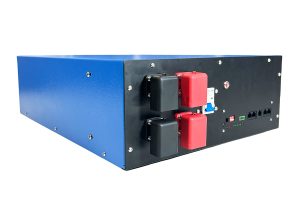 Filters
Filters - Supply Voltage, VАС: -
- Rated Power, W: 5 kW
- Power Consumption, W: -
- Power Factor, cos ϕ: -
- Luminous Flux, Lm: -
- CCT, К: -
- CRI, Ra: -
- Protectrion IP: 21
- Material: metal
Storage, maintenance and transportation of LiFePO4 batteries.
1. The battery pack is usually stored at a state of charge of 20% to 40% in a clean, dry, ventilated and rain-proof room with an ambient temperature of -5°C to 35°C and a relative humidity of not more than 75%, and should be placed flat. Pad height, not less than 100MM from the ground;
2. Batteries cannot be stored with active chemicals or dusting items;
3. The battery cannot be subjected to any mechanical shock or heavy pressure;
4. The battery should avoid direct sunlight, keep away from the fire source, and the distance from the heat source should not be less than 2M;
5. From the date of manufacture, every 3 months of storage should be charged with a current of 0.2~0.5C for 30~60min, and the temperature range is 25°C±5°C.5);
6. The battery pack should be packaged and shipped. During transportation, avoid severe vibration, shock or extrusion, and avoid sun and rain. Batteries can be transported by vehicles such as cars, trains, ships, and planes;
7. The battery pack should remain at 40% – 60% of state of charge;
8. When the battery is not in use for a long time, it is recommended to charge it with 0.2c current every three months or so;
9. During the maintenance process, do not install or remove the battery in the battery pack by yourself, otherwise the battery performance will be reduced;
10. Any battery in the battery pack shall not be disassembled or replaced without authorization, and dissection of the battery is strictly prohibited.



